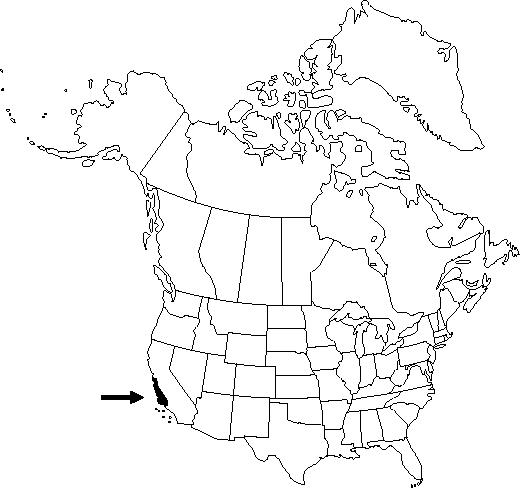Difference between revisions of "Delphinium umbraculorum"
Brittonia 8: 19. 1954.
imported>Volume Importer |
imported>Volume Importer |
||
| Line 51: | Line 51: | ||
|publication year=1954 | |publication year=1954 | ||
|special status=Endemic | |special status=Endemic | ||
| − | |source xml=https:// | + | |source xml=https://bitbucket.org/aafc-mbb/fna-data-curation/src/2e0870ddd59836b60bcf96646a41e87ea5a5943a/coarse_grained_fna_xml/V3/V3_183.xml |
|genus=Delphinium | |genus=Delphinium | ||
|section=Delphinium sect. Diedropetala | |section=Delphinium sect. Diedropetala | ||
Latest revision as of 22:46, 5 November 2020
Stems 40-70(-90) cm; base often reddish, glabrous or puberulent. Leaves usually present on proximal 1/5 of stem at anthesis; basal leaves 0-3 at anthesis; cauline leaves 3-7 at anthesis; petiole 0.8-12 cm. Leaf blade round to pentagonal, 1.5-4 × 2-6 cm, nearly glabrous; ultimate lobes 3-13, width 3-20 mm (basal), 1-8 mm (cauline). Inflorescences (5-)10-25(-45)-flowered, open, narrowly pyramidal; pedicel 0.5-3(-7) cm, glabrous to puberulent; bracteoles 3-7 mm from flowers, green, linear, 3-6 mm, puberulent. Flowers: sepals dark blue, puberulent, lateral sepals spreading, 9-16 × 4-7 mm, spurs gently upcurved, ascending 30-45° above horizontal, 8-14 mm; lower petal blades elevated, exposing stamens, 3.5-6 mm, clefts 0.5-1.5 mm; hairs densest near junction of blade and claw above base of cleft, centered or on inner lobes, white. Fruits 9-16(-19) mm, 2.5-3(-4) times longer than wide, puberulent. Seeds: seed coat cells brick-shaped, cell margins straight, surfaces smooth. 2n = 16.
Phenology: Flowering late spring–early summer.
Habitat: Slopes in oak forests
Elevation: 400-1600 m
Discussion
Delphinium umbraculorum is most often confused with D. patens subsp. hepaticoideum; refer to discussion of that taxon for distinguishing features. Hybrids occur with D. parryi and D. patens subsp. montanum.
Selected References
None.
